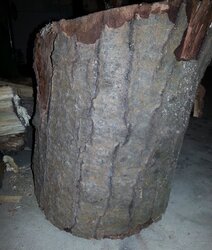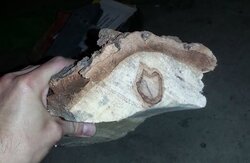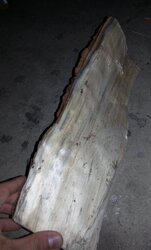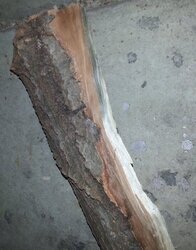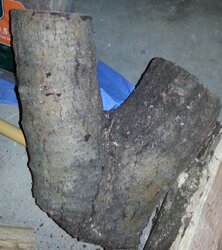Hi everyone, I'm so glad I found this forum, its really an awesome resource.
I just purchased my first home in October and it has electric heat. It does have an open fireplace so I have been using that while I am home to help offset the cost of heating. Since I was caught off-guard, I have had to buy some wood for this winter, some well seasoned red oak. My plan is to install a wood stove over the summer that used to belong to my dad and keep busy all summer bucking and splitting wood. I can't wait because I actually enjoy it. I always used to do it just to have firewood for camping. I have a husqvarna 445 and 2 mauls and plan on buying an old pickup truck (my Jeep Cherokee can't hold that much wood haha)
My brother-in-law does own some land with tons of downed trees that have been down for a few years. It was being selectively logged but the loggers ran out of money and the workers walked off the job. A ton of downed trees have been left behind and I have been told I am more than welcome to all of them so that is a huge score.
I'm really into ID'ing the species and learning about each of them. Leaves are out of the question since they have been down for a few years so I am mostly going by bark. So far I cut up 3 trees. One I believe to be a sweet cherry, one I know is a sassafras (might keep that for camping wood or until I get the stove, it pops like crazy in my open hearth! I can put the screen up but I don't get as much heat when its in place. I like to move it while I am on the couch right there watching it.
Anywayyyyyy, I am having one heck of a time identifying the 3rd tree. Every time I think I know what it is I see another picture that makes me doubt it. It was very hard to split, sometimes the maul would bounce right off it and its super heavy. Its not a conifer. I was thinking white poplar maybe? But then when I look at pictures it just doesn't seem right. Nothing I've seen so far has been a match in my eyes. Can anyone identify this? Underneath the bark it is a sort of nutmeg orange brown and the wood is very white with silver streaks going through it.
I just purchased my first home in October and it has electric heat. It does have an open fireplace so I have been using that while I am home to help offset the cost of heating. Since I was caught off-guard, I have had to buy some wood for this winter, some well seasoned red oak. My plan is to install a wood stove over the summer that used to belong to my dad and keep busy all summer bucking and splitting wood. I can't wait because I actually enjoy it. I always used to do it just to have firewood for camping. I have a husqvarna 445 and 2 mauls and plan on buying an old pickup truck (my Jeep Cherokee can't hold that much wood haha)
My brother-in-law does own some land with tons of downed trees that have been down for a few years. It was being selectively logged but the loggers ran out of money and the workers walked off the job. A ton of downed trees have been left behind and I have been told I am more than welcome to all of them so that is a huge score.
I'm really into ID'ing the species and learning about each of them. Leaves are out of the question since they have been down for a few years so I am mostly going by bark. So far I cut up 3 trees. One I believe to be a sweet cherry, one I know is a sassafras (might keep that for camping wood or until I get the stove, it pops like crazy in my open hearth! I can put the screen up but I don't get as much heat when its in place. I like to move it while I am on the couch right there watching it.
Anywayyyyyy, I am having one heck of a time identifying the 3rd tree. Every time I think I know what it is I see another picture that makes me doubt it. It was very hard to split, sometimes the maul would bounce right off it and its super heavy. Its not a conifer. I was thinking white poplar maybe? But then when I look at pictures it just doesn't seem right. Nothing I've seen so far has been a match in my eyes. Can anyone identify this? Underneath the bark it is a sort of nutmeg orange brown and the wood is very white with silver streaks going through it.


